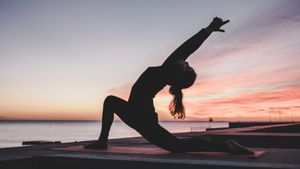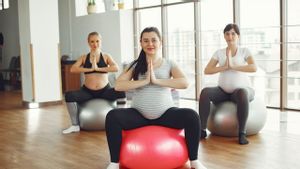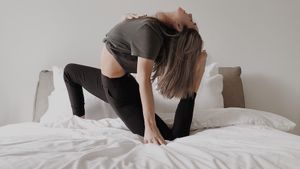JAKARTA – Yoga is known as a sport or body exercise that has various types. Each type has a different character movement. Because they have different movement characters, their functions are also different. Although both to get mental and physical health.
Yoga has developed thousands of years ago in India. Based on the terminology or origin of the word, yoga comes from the Sanskrit Yuj which means the union of the soul and unlimited consciousness with the soul and universal or divine consciousness.
It is easy to understand that consciousness is an instrument that unites the microcosm, namely the body and the macrocosm or universe. To practice, the union of the physical body and soul is done by performing certain poses.
Physical activity in yoga involves meditation with stretching, breathing, the flexibility of the body, and a balance between emotion, spirit, spirituality, and the physical body. As reported by the Atlantic Spine & Health Clinic, Monday, June 21, yoga is divided into 9 types, including the following:
Hatha Yoga
In Sanskrit, Hatha means the power which is considered the 'mother' of all yoga practice. For those of you who are just starting to practice yoga, hatha yoga is very suitable because the movements are full of gentleness and slow tempo.
Hatha yoga serves as a relaxing exercise and teaches proper breathing, postures, meditation, and relaxation techniques.
SEE ALSO:
Vinyasa
Vinyasa yoga is movements based on the connection between inhalation and exhalation. The Surya Namaskar movement is included in vinyasa yoga with a variety of balance movements, backbends, or sitting poses.
Vinyasa yoga movements emphasize the flow of postures with smooth transitions from one movement to the next. After Surya Namaskar, the practice ends with Savasana.
Iyengar Yoga
In contrast to vinyasa, Iyengar yoga emphasizes intensity. A person practicing Iyengar yoga movements needs to hold the pose for a long time and develop the movement in line with the breath. Usually, Iyengar yoga poses require props such as ropes and blocks.
Iyengar yoga practice can be followed by those who have injuries and chronic problems to accommodate limitations to gain strength, stability, and flexibility.
Bikram Yoga
Bikram yoga was initiated by Bikram Choudhury by formulating 26 sequences of postures. The posture or pose is believed to be able to work the muscles, veins, ligaments, and organs. What is certain is that if you do Bikram yoga you will sweat because the room is intentionally used without cooling with 40 percent humidity.
Bikram yoga is arguably a branch of vinyasa, the basic practice of which is the asana that coordinates movement and breath.

Ashtanga Yoga
Similar to Bikram and vinyasa, ashtanga yoga also connects movement with the breath but poses emphasize strength. Initiated by K. Pattabhi Jois, ashtanga yoga takes years to focus on posture and not on movement development.
Jivamukti
This form of Jivamukti yoga is more than just a sport but a way of life as it includes ethics, spirituality, and the physical. Formulated by Sharon Gannon and David Life, Jivamukti yoga also talks about caring for the environment, being kind to animals, and being vegan.
The five important aspects of Jivamukti yoga are Shastra (holy scriptures), Bhakti (devotion), Ahimsa (non-harm), Nada (music), and Dhyana (meditation).
Kundalini
The root of kundalini yoga is the Chakras, which focus on the work of the core and the breath or pranayama. The goal is to open your mind and make you more aware of your mind and body. This class does not only pursue physical exercise, but also mental exercise.

Anusara Yoga
Anusara yoga includes all previous yoga techniques. Anusara yoga is relatively new, started in 1997 by John Friend, focusing on finding the 'light' from within. Movement exercises involve breathing, alignment, and the help of some props.
Yin Yoga
This form of yin yoga was initiated by a Taoist yoga teacher and martial arts expert, Paulie Zink. The movements are very slow and hold each pose for at least five minutes.
Its health benefits are that it helps improve blood circulation and flexibility because it stresses the connective tissue in the body. And the yin yoga movement aims to increase the qi or life energy in the body. This yoga also sharpens patience, calms, and focuses on breathing.
The English, Chinese, Japanese, Arabic, and French versions are automatically generated by the AI. So there may still be inaccuracies in translating, please always see Indonesian as our main language. (system supported by DigitalSiber.id)


















